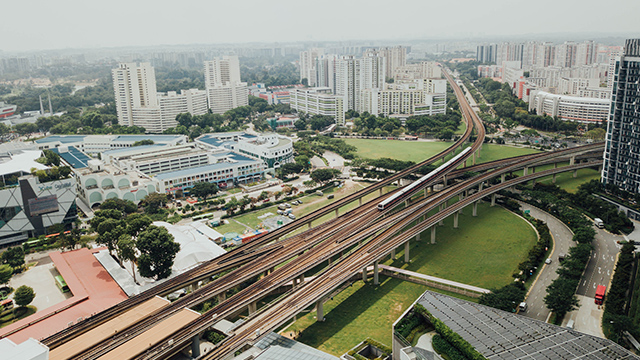961 results found
Featured results



More results
The latest milestone of Global Infrastructure Hub’s Brazil Country Engagement Program has been completed with a gathering of infrastructure leaders from Brazil for an inception workshop on the SOURCE platform.

The paper looks at the consequences of Technological disruption in construction for infrastructure-investment managers.


The Asian Journal Special Issue on High-Speed Rail (HSR) Services in Asia provides an overview of the impacts of HSR infrastructure in Asia and explains how investment in HSR brings significant socio-economic changes.

This paper establishes a general equilibrium trade model and adopts the “market access” approach to measure the impact of the high-speed railway (HSR) network on the economic growth.

How can hospital PPPs learn from the past to adapt for a post-COVID world?
This paper provides a review of the literature connecting housing, housing finance and the broader economy. It draws together work in these areas that are seldom part of the mainstream literature of economic development.

Find out what implications data infrastructure will have have on business models and infrastructure delivery in the future.
To attract the trillions of dollars needed in infrastructure investment to fuel global growth and create jobs, we need better information about what’s working and why.
After decades of private sector growth, private capital holds most available global finance. The rise of private wealth coincided with the decline of public wealth in developed countries, which now hold zero or even negative shares in total wealth due to significant public debt burdens, according to the 2022 World Inequality Lab Report. Moreover, the 2023 IMF Global Debt Monitor revealed that global public debt reached 90% of GDP in 2022, a dramatic increase from the 30% recorded in the early 1970s.
Low-income countries must maintain the necessary focus on basic goals such as improving energy access, providing safe and quality transport services, water, food security, and education - while forgoing opportunity, dealing with additional risks, and prioritising climate-smart investments.
Ensuring disadvantaged communities have access to adequate infrastructure is a key goal of a new Hub tool, writes Morag Baird, Senior Manager, Leading Practices and Policy, GI Hub.
We continue our discussion on inclusive infrastructure with Sue Barrett, EBRD, in which we explore two of EBRD’s innovative finance approaches for inclusive infrastructure.
How can cities absorb the influx of people without developing new and more efficient ways of building, transporting, and consuming resources? Without significant disruption across urban infrastructure, the cities of the future will struggle to keep up, much less make progress toward things like mitigating climate change or providing quality education to every student.
Infrastructure projects are capital-intensive and emerging countries often rely on private investment to implement them. As projects generate revenues in local currency (usually escalated by local inflation), the mismatch between the revenues and the debt service in foreign currency represents a major risk. Without a reliable mechanism to properly mitigate the foreign exchange (FX) risk, relevant sources of potentially long-term and less expensive funding are not accessible. A deep assessment of the FX risk and the development of innovative mitigatory solutions is critical to amplify the offer of long-term credit facilities for infrastructure financing.
Find out what needs to change in the workforce to meet future needs of the construction industry.

Public investment in infrastructure is more effective in increasing economic output than other types of public spending


The paper analyses the impact of infrastructure on trade, suggesting that potential gains are large and increase with the quality of infrastructure of trading partners.

This paper exploits variations in the timing of telecommunications reforms across Europe to analyze the relationship between the rise of alternative work arrangements and the emergence of the Internet, which sectors are most impacted by the internet is also reviewed.




 Brazil Country Engagement Program
Brazil Country Engagement Program













